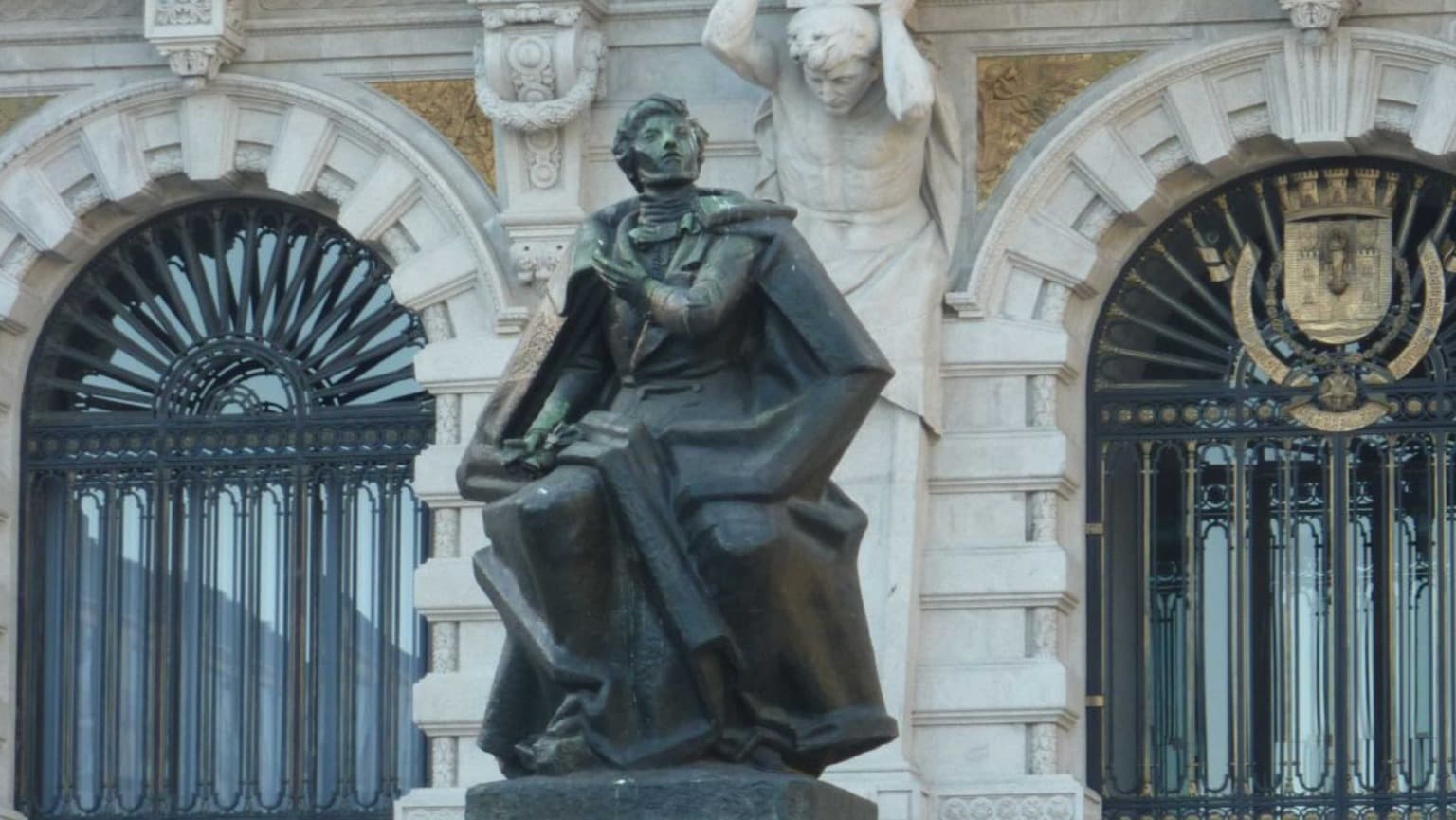Discover Almeida Garrett: Porto's Literary Icon
August 2, 2024
João Leitão da Silva, better known to the general public as Almeida Garrett, was born on February 4th, 1799, in the old Rua do Calvário, in the parish of Vitória in the city of Porto. He was one of the most renowned and well-known writers of 19th-century Portuguese literature. Born into a privileged family with a varied education, his initial influence came from his maternal grandfather, José Bento Leitão, at Quinta do Sardão, in Oliveira do Douro (Vila Nova de Gaia), where he adopted the name João Baptista da Silva Leitão.

Statue of Almeida Garrett in Front of Porto's Municipality
During his teenage years, Almeida Garrett lived in the Azores, particularly on the island of Terceira, to escape Napoleon Bonaparte's French troops. He was educated by his paternal uncle, Bishop Alexandre da Sagrada Família da Silva Garrett, the Bishop of Angra at that time. This period was influential in his adoption of liberal ideals. Moving to Coimbra in 1816, he enrolled in the Law course at the Faculty of Coimbra, and in 1818, he combined the surnames Almeida and Garrett, the surnames of his maternal and paternal families, respectively. As a result, he signed his name as João Baptista da Silva Leitão de Almeida Garrett. While in Coimbra, he published his first book, "O Retrato de Vénus," which led to him being prosecuted for being considered materialistic, atheistic, and immoral, although he was acquitted.
After completing his academic studies in 1821, he developed strong political ambitions, evident in his involvement in the Liberal Revolution in Porto in 1820, which aimed to establish a constitutional monarchy in Portugal. Due to his active participation in the liberal struggles, he was forced to leave Portugal in 1823 when absolutism was restored following a counter-revolt led by King Miguel. He then chose to go into exile in England, where he was introduced to the Romantic movement and discovered authors like Shakespeare and Walter Scott. His experiences in England, including visiting feudal castles and the ruins of Gothic churches and abbeys, greatly influenced his later work. In 1824, he left for France, where he produced his first romantic works, "Camões" in 1825 and "Dona Branca" in 1826.
After participating in the Mindelo Landing and the Siege of Porto in 1832 and 1833, Almeida Garrett, Alexandre Herculano, and Joaquim António de Aguiar, settled permanently in Portugal. He held several political positions both in and outside the country, allowing him to establish the ideal conditions to begin publishing his most notable titles. In 1843, he published "Frei Luís de Sousa" and "Viagens na Minha Terra".
It's worth noting that Almeida Garrett was married to a young woman named Luísa Midosi, but they later separated (they did not formally divorce as divorce was not legally available in Portugal at that time). Additionally, he played a key role in creating the D. Maria II National Theatre and the Conservatory of Dramatic Art, contributing significantly to the growth of theater and literature in Portugal.